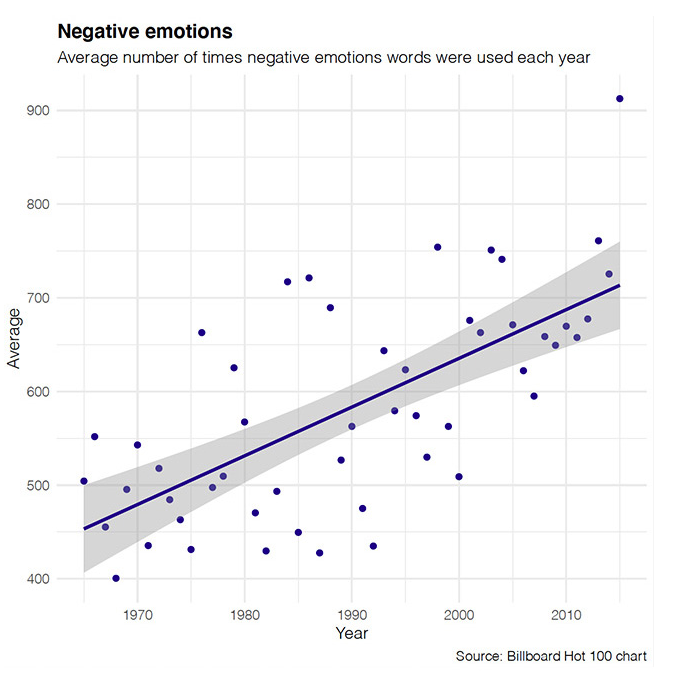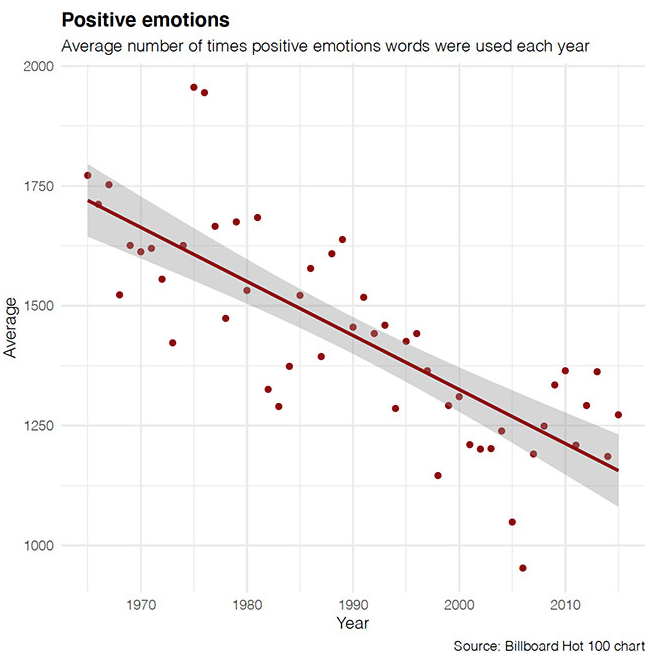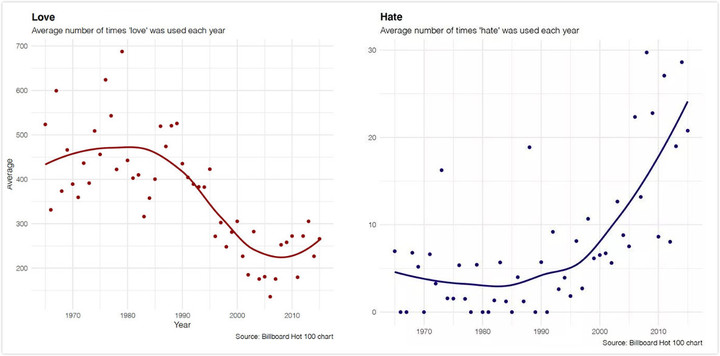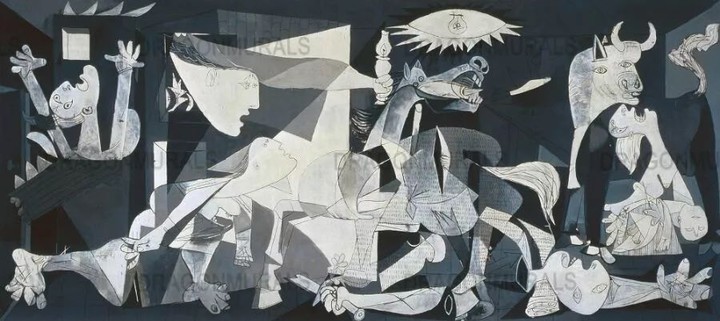The lyrics of “Sad man don’t listen to slow songs” is now expected to be changed to:
Sad people stop listening to English pop songs.
Recently, a research indicates Compared with 50 years ago, English songs have become more and more negative, and emotional negative words in lyrics have increased by more than a third.
Research is conducted through a text sentiment analysis algorithm, which has been widely used in literature and journalism research.
The research team has imported 150,000 songs from Biilboard’s top 100 songs and lyrics site Musixmatch every 50 years into the algorithm as research data.

Finally, whether it ’s a golden song in Billboard or a wider-used Musixmatch thesaurus, the results of the analysis of the two sets of data are consistent, that is, there are more and more negative lyrics in English popular songs. With an increase of more than a third, English pop music has become increasingly mournful.
Take Billboard’s 50-year Top 100 songs as an example of analysis. Among these songs, each song has an average of about 300 words, and each year’s Top 100 songs have about 30,000 words.
In 1965, negative words appeared 450 times. By 2015 this number had exceeded 700 times.

▲ The dot represents the number of occurrences per year, the line represents the overall trend, the picture comes from: aeon
On the contrary, the lyrics expressing positive emotions are decreasing sharply. Also from 1964 to 2015, the number dropped from 1750 to 1150.

▲ points represent the number of occurrences per year, lines represent the overall trend, the picture comes from: aeon
If you focus on a specific word, such as the word “love”, compared to 50The frequency of occurrences halved a year ago and the average number of occurrences decreased from 400 to 200. The word “hate” almost never appeared in the 1990s, but in recent years, it will appear 20 to 30 times a year.

▲ points represent the number of occurrences per year, and lines represent the overall trend. Picture from: aeon
This study has the same results as another study that analyzes the emotions expressed by songs in terms of tunes.
If a song is in major key, the song will look cheerful, while in a minor key, it will look sad. And by studying the 500,000 songs released in the UK between 1985 and 2015, the researchers found that more and more songs choose to use slow rhythms and minor keys.
Can music really affect one’s mood? Really can.
In fact, art is easier to convey emotion than science.
A medieval painting, even if the time span is huge, people ’s ideological and cultural backgrounds have changed dramatically, but people can still feel the emotions the artist wants to express through the lines, colors, and shadows.

▲ Pinyipin What can you feel about this “Guernica” , Picture from: Picasso
Music is the same.
In 2009, German scientists brought a group of African indigenous people to listen to Western music. The results show that even with different cultures and different musical backgrounds, the three basic emotions expressed in the mainstream of Western music: happiness, sadness and fear can be felt.
So, why are music now expressing more and more negative emotions?
The reason is simple, because it’s popular.
The “cultural evolution theory” in social communication is cited in the research report, which argues that negative content is easier to remember and spread than positive and neutral content.
It is not difficult to understand from a commercial point of view. Now that it has entered a centralized production and sales record company, why is it more inclined to launch negative songs.